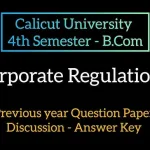Fun and Easy LCM Questions for Class 5 with Answers You’ll Love to Solve
What is the LCM of 4 and 6?
The smallest number that both 4 and 6 can divide is 12, so the answer is 12.
Find the least common multiple of 3 and 5.
Both 3 and 5 go into 15, so the LCM is 15.
What is the LCM of 2 and 8?
Both 2 and 8 can go into 8, so the LCM is 8.
Find the LCM of 6 and 9.
Both numbers can divide into 18, so 18 is the answer.
Which is the least common multiple of 10 and 12?
They both go into 60, so 60 is the LCM.
What is the smallest number common to 7 and 14?
The smallest number both go into is 14.
Find the LCM of 3, 4 and 6.
All three numbers go into 12, so the LCM is 12.
What number is a multiple of both 5 and 20?
The smallest is 20 itself.
What is the LCM of 8 and 12?
The answer is 24, as both divide into it.
Find the least common multiple of 9 and 12.
36 is the first number both divide into, so the LCM is 36.
A boy jumps every 6 seconds and a girl jumps every 8 seconds. After how many seconds will they jump together?
They will jump together after 24 seconds.
Two bells ring every 3 and 4 minutes. When will they ring together?
They will ring together after 12 minutes.
What is the least number that both 11 and 22 can divide into?
It is 22.
Find the LCM of 1 and 7.
The LCM is 7 because anything times 1 is the number itself.
Which is the least common multiple of 5 and 15?
15 is the answer as both divide into it.
What is the LCM of 7 and 9?
The smallest number both divide into is 63.
Find the smallest number that is a multiple of 3 and 7.
The answer is 21.
What is the LCM of 6 and 10?
They both divide into 30, so the LCM is 30.
Find the LCM of 2, 3, and 5.
The smallest number all three go into is 30.
What number is common between 4 and 9?
36 is the smallest common multiple.
If two children clap every 5 and 6 seconds, when will they clap together?
They will clap together after 30 seconds.
What is the LCM of 15 and 25?
The smallest number both divide into is 75.
Find the LCM of 2 and 5.
The answer is 10.
Which is the least common multiple of 3 and 6?
6 is the LCM as both divide into it.
What is the LCM of 10 and 15?
They both divide into 30.
Two people run around a park. One takes 12 minutes, the other 18 minutes to finish. When will they meet again at the starting point?
They will meet after 36 minutes.
Find the LCM of 7 and 13.
Since they are both prime, the LCM is 91.
What is the LCM of 9 and 10?
The answer is 90.
Find the LCM of 4, 5 and 6.
They all divide into 60, so 60 is the LCM.
What is the least common multiple of 2 and 3?
The answer is 6.
Find the smallest number that is a multiple of both 6 and 8.
It is 24.
If a drum is hit every 5 minutes and a bell is rung every 10 minutes, when will they happen at the same time again?
After 10 minutes.
Find the LCM of 11 and 33.
The LCM is 33.
Which is the least common multiple of 12 and 18?
36 is the answer.
What is the LCM of 16 and 20?
The smallest number they both go into is 80.
Find the LCM of 2 and 9.
18 is the answer.
What number is common to both 8 and 10?
40 is the LCM.
Find the smallest number that is a multiple of 3 and 11.
33 is the answer.
If one light flashes every 7 seconds and another every 9 seconds, when will they flash together?
They will flash together after 63 seconds.
What is the LCM of 14 and 21?
The smallest number both go into is 42.
Find the LCM of 3 and 8.
24 is the answer.
What is the least common multiple of 6, 9, and 15?
All three divide into 90, so 90 is the LCM.
Find the smallest number common to 5 and 6.
It is 30.
What is the LCM of 1, 2, and 3?
The answer is 6.
Find the smallest number that 7 and 10 divide into.
It is 70.
What number is a multiple of both 12 and 16?
48 is the smallest one.
What is the LCM of 5, 10, and 15?
30 is the answer.
Find the least number that 4 and 7 can divide into.
28 is the LCM.
What is the smallest common multiple of 3 and 12?
12 is the answer.
If two cars beep every 6 and 9 minutes, when will they beep together?
After 18 minutes.
What is the LCM of 2 and 7?
The smallest number they both divide into is 14.
What is the LCM of 13 and 26?
It is 26, since 26 is already a multiple of 13.
Top Indian Books for LCM Questions and Practice for Class 5 Students
-
Mathematics Made Easy – Class 5
Author: R. S. Joshi
Publisher: Arya Publishing Company
Content: Includes conceptual explanations, LCM word problems, real-life application questions, and MCQs with answers. Designed for easy understanding through visual examples. -
Step-by-Step Mathematics Workbook – Class 5
Author: Meera Sood
Publisher: Full Marks Pvt. Ltd.
Content: Provides well-structured worksheets with LCM puzzles, matching exercises, and fill-in-the-blank questions to reinforce concepts through practice. -
Fun with Numbers – Book 5
Author: Seema Narang
Publisher: Vikas Publishing House
Content: Focuses on making LCM interesting through fun facts, brain teasers, and activity-based questions. Includes a separate section for timed practice. -
Target Maths Olympiad – Level 5
Author: Amit Garg
Publisher: Disha Publications
Content: Offers competitive-level LCM problems, including tricky reasoning-type questions and quick methods to solve LCM in exams. -
Mastering Math Skills – Class 5
Author: Anjali Bansal
Publisher: Rachna Sagar Pvt. Ltd.
Content: Covers LCM through chapter-end challenges, case studies, and real-world scenario-based questions that strengthen concept application. -
Smart Maths – Book 5
Author: G. Ramakrishnan
Publisher: Oxford University Press India
Content: Contains step-by-step problem-solving techniques, interactive LCM games, and graded difficulty levels for self-paced learning. -
ICSE Mathematics Practice Book – Class 5
Author: Priya Mathur
Publisher: Goyal Brothers Prakashan
Content: LCM-focused worksheets aligned with ICSE syllabus. Includes revision exercises, previous exam-style questions, and short answer problems. -
Olympiad Champs Mathematics – Class 5
Author: S. L. Jain
Publisher: MTG Learning Media
Content: Designed for Olympiad preparation, this book includes conceptual LCM questions, mental math tricks, and skill-building exercises. -
Bright Math Workbook – Class 5
Author: Kavita Agarwal
Publisher: Ratna Sagar Pvt. Ltd.
Content: Offers engaging visuals and worksheets on LCM, along with review checkpoints and teacher’s tips for better comprehension. -
Maths Lab Activities – Book 5
Author: V. K. Rao
Publisher: Saraswati House
Content: Emphasizes hands-on learning with LCM-based activities, group work challenges, and DIY practice cards. -
Skill Boosters: Mathematics Class 5
Author: Reena Verma
Publisher: EduKart Books
Content: Includes step-by-step problem-solving, weekly practice tests, and thematic LCM word problems connected to everyday life. -
Super Maths Enrichment – Class 5
Author: Nandita Mukherjee
Publisher: S. Chand Publishing
Content: Combines concept clarity with challenge-based questions, including riddles and story-style LCM tasks. -
Champion Mathematics Practice – Class 5
Author: P. R. Mishra
Publisher: Evergreen Publications
Content: Comprehensive problem sets on LCM, time-based tests, quick revision summaries, and HOTS (Higher Order Thinking Skills) questions. -
Learn and Practice Maths – Class 5
Author: Sonia Kapoor
Publisher: Madhubun Educational Books
Content: Balances theory with application, including solved examples, creative problem-solving tasks, and review quizzes. -
Concept Builder Mathematics – Grade 5
Author: Aarti Sharma
Publisher: Orient BlackSwan
Content: Designed for concept mastery, with a focus on logical reasoning, Venn diagrams, and daily use cases for LCM. -
Essential Mathematics – Class 5
Author: V. P. Jain
Publisher: Bharti Bhawan Publishers
Content: Contains traditional LCM questions, review checkpoints, and structured revision for classroom and home learning. -
Smart Learners Maths Workbook – Class 5
Author: Neeta Chopra
Publisher: New Saraswati House
Content: Offers chapter-end LCM quizzes, word problems with visuals, and a focus on speed and accuracy. -
New Age Mathematics – Class 5
Author: Nisha Bahl
Publisher: Macmillan India
Content: In-depth explanation of LCM through real-life math labs, group worksheets, and assessment-ready tests. -
Easy Maths Series – Book 5
Author: Rajni Khandelwal
Publisher: Laxmi Publications
Content: LCM questions in increasing order of difficulty, paired with practice tests and detailed answer keys. -
Creative Maths for Bright Minds – Class 5
Author: Arvind Rathi
Publisher: Scholar’s Hub
Content: Covers advanced-level LCM applications, mix-and-match questions, logical deduction sets, and math games to build confidence.
LCM Questions for Class 5: A Fun Way to Build Strong Math Foundations
Understanding the Least Common Multiple (LCM) is a key part of building a strong math foundation in Class 5. At this stage, students are introduced to various concepts that go beyond simple addition or multiplication. LCM helps them understand how numbers relate to each other and how patterns work in daily life, making it more than just a school subject—it becomes a life skill.
What is LCM and Why is it Important?
LCM, or Least Common Multiple, is the smallest number that two or more numbers can divide into evenly. For example, the LCM of 4 and 6 is 12, because 12 is the first number that both 4 and 6 divide into without leaving a remainder.
Learning how to find the LCM is important because it’s used in real-life situations. Whether it’s syncing cycles, comparing quantities, or solving time-related word problems, the LCM is a practical concept. For students in Class 5, understanding this topic prepares them for more advanced topics like fractions, ratios, and algebra.
Types of LCM Questions for Class 5 Students
LCM questions for Class 5 usually begin with direct number-based problems. These include finding the LCM of two or three numbers using listing or prime factorization (without naming the method explicitly for young learners).
As students progress, they solve word problems that apply LCM in real scenarios. For example:
Two children clap every 4 and 5 seconds. After how many seconds will they clap together?
Such questions help children apply what they’ve learned in meaningful ways.
There are also pattern-based LCM questions, puzzles, and timed challenges. These not only improve calculation skills but also boost logical thinking and confidence.
How to Make LCM Learning Engaging
To make LCM learning fun, educators and parents can use visual aids, such as number grids or Venn diagrams. These tools help students visualize how numbers align. Games like LCM bingo or flashcard races can also keep the learning process dynamic and exciting.
Online practice platforms or printed worksheets are another great option. These often offer structured question sets—from beginner to advanced—allowing students to progress at their own pace.
Expert Tips for Teaching LCM in Class 5
-
Start with small numbers to help students spot patterns.
-
Use real-life examples, like aligning two clocks or organizing events.
-
Keep practice regular to build speed and accuracy.
-
Encourage children to explain their thinking; it deepens understanding.
-
Introduce friendly competition or timed challenges to make practice enjoyable.
SEO Keywords Used:
lcm questions for class 5, least common multiple class 5, lcm word problems, class 5 math questions, lcm practice questions for students
FAQ for lcm questions for class 5
What is the easiest way to teach LCM to a Class 5 student?
Start by using small numbers and show how multiples work. Use real-life examples to make the concept relatable.
How can I help my child practice LCM at home?
You can use daily routines to create simple word problems, such as syncing claps, organizing items in equal groups, or using flashcards.
Are word problems important in LCM practice?
Yes, word problems show how LCM is used in real-life situations and help students apply their understanding beyond basic sums.
How many types of LCM questions are there for Class 5?
Students may encounter direct number problems, word problems, puzzles, multiple-choice questions, and timed drills.
What is a good score in an LCM worksheet for Class 5?
If a student can correctly solve 80% or more of the LCM problems independently, it shows strong understanding.
Can LCM be taught without using formulas?
Absolutely. In Class 5, LCM is best taught using basic multiplication and listing methods instead of complex formulas.
Why is LCM important before learning fractions?
Understanding LCM helps students find common denominators in fractions, which is essential for adding or comparing them.
What are common mistakes students make with LCM?
Skipping multiples, stopping too early, or confusing LCM with HCF (Highest Common Factor) are common errors. Regular practice helps avoid them.
Latest Posts
- Step-by-step guide to download and apply for jee mains admit card 202
- Comprehensive 2025 government holidays and recruitment details for job seekers
- JEE Mains Admit Card 2025: Your Step-by-Step Guide to Downloading the Hall Ticket
- Everything You Need to Know About 2025 Government Holidays Recruitment
- Comprehensive Guide to rrb d group recruitment 2025 – Eligibility, Vacancies, and Application
- Detailed guide to nps trust recruitment 2025 vacancies, eligibility and apply process
- Comprehensive guide to hpcl recruitment 2025 notification, vacancies, and application process
- ignou bed admission 2025 complete recruitment guide with eligibility and process
- Comprehensive Guide to Indian Army Agniveer Recruitment 2025 Notification and Jobs
- Everything You Must Know About CBSE Board Exams 2025 Changes & New Rules


![Romantic Shayari in English [ 100+ New Shayari on Love ] romantic shayari in english](https://india.yuvajobs.com/news/wp-content/uploads/2024/10/romantic-shayari-in-english-150x150.webp)



